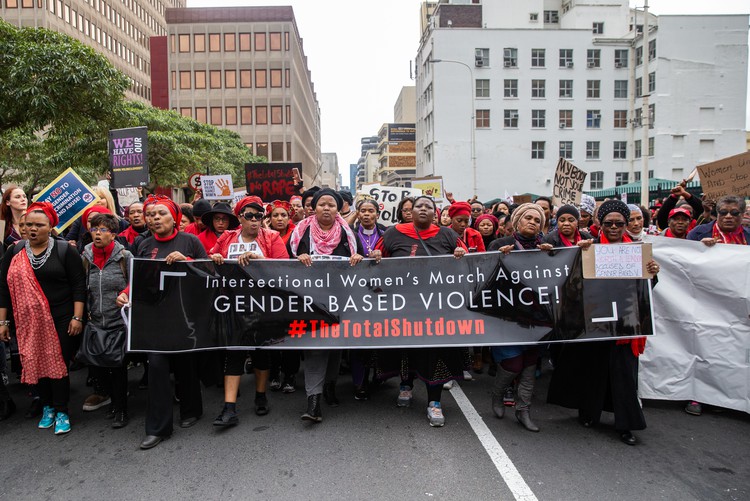
22 February 2022
New laws offer protection against online forms of harassment. Archive photo from 2018: Ashraf Hendricks
Last month President Cyril Ramaphosa signed three laws which can enhance protection against gender based violence and improve access to justice for victims and survivors. One of them, the Domestic Violence Amendment Act, focuses on violence online and in social media.
When the Domestic Violence Amendment Act was first introduced in September 2020, the Bill gave some consideration to the role of technology in domestic violence. This sparked interest by a collective of activists, technologists, policymakers, researchers, and feminists, who made submissions to Parliament. As a result the Act includes changes resulting in a relatively comprehensive recognition of online harm.
The new definition of electronic communications includes various forms of digital audio, text, video and images, but it also includes simulated and manipulated information. The Act can therefore provide protection against the sharing of non-consensual manipulated and deep fake images (videos or images altered to create fake content that looks authentic).
An expanded definition of harassment now includes various forms of online harassment, such as:
The definition of sexual harassment now includes, for example, sending unwelcome electronic communications of a sexual nature. It also provides protection against “outing” (the non-consensual sharing of information about a person’s sexual orientation, gender or gender expression).
The definition of intimidation is also extended to include threatening conduct by way of electronic communications.
Together these expanded definitions have created scope for protection against conduct such as doxing (publishing private or identifying information about a person), deep fakes, deadnaming (revealing a transgender or non-binary person’s former name without their consent), outing, the non-consensual sharing of intimate images, and digital stalking.
In response to public submissions, lawmakers amended the Domestic Violence Amendment Act to use gender-neutral language, such as “they” instead of “he/she”. This marks the second time in South Africa’s recent history that the legislature has adopted gender-neutral language.
The Act also provides protection from outing as a form of sexual harassment and as a form of emotional, verbal, or psychological abuse. It is a significant step towards better protection for the rights of sexual and gender minorities, on and offline.
The Act now makes it possible for victims and survivors to apply online for protection orders against acts of domestic violence. Intimidation, harassment, and sexual harassment all form part of the umbrella term “domestic violence”.
The Act also provides for a centralised database of domestic violence protection orders, which may improve the practical functioning of the protection order process.
The Act provides for electronic communications service providers to give information to a court to help identify the perpetrator of a harmful electronic communication. This inclusion comes from a similar provision in the Protection From Harassment Act.
Despite all this, South Africa’s great digital divide, where there is significant inequality to internet access and digital literacy, means that there is a long way to go before these protections extend to all those who need them.
There are also privacy implications, since that domestic violence protection orders contain sensitive information. The Act recognises this and requires the administrator of the repository of protection orders to consult with the Information Regulator.
The legal recognition that online gender-based violence is part of the same continuum of gender-based violence is welcome. We can also celebrate the role of the public participation process in supporting the development of responsive and inclusive laws.
But more work needs to be done. We need digital literacy, training, and better awareness from law enforcement officials, magistrates, and clerks to enable them to grapple with online harm and effectively implement the Act.
Recognising online harm, and knowing your options, is a crucial step towards a safer, accessible, and inclusive internet.